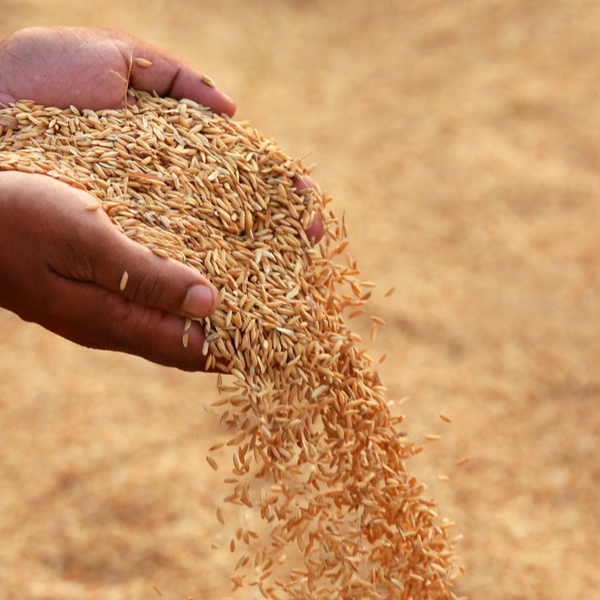Union Budget 2018 had many hopes riding on it as it was the last full budget before the General elections next year. Everyone was expecting it to be a budget full of populist measures and subsidies attached. However, it has turned out to be quite a balanced Budget in terms of macro factors, but there have been certain setbacks in the way incomes and gains are being taxed leaving salaried class and investors without any meaningful benefit from this year’s Budget.
The Finance Minister’s Budget speech revolved around optimism for the Indian economy. Here are some of the key highlights of Union Budget 2018:
Agriculture and Rural Economy

FM started his budget speech with a continued focus on agriculture and rural economy. Govt. announced to keep Minimum Support Price (MSP) for the all unannounced crops of Kharif at least at one and half times of their production cost. This is aimed at doubling the income of our farmers. Further, an Agri-Market Infrastructure Fund with a corpus of Rs. 2,000 crore will be set up for developing and upgrading agricultural marketing infrastructure in the 22,000 Grameen Agricultural Markets (GrAMs) and 585 APMCs.
The Kisan Credit Card Scheme is being expanded to fisheries and animal husbandry farmers to help them meet their working capital needs. FM has also announced to continue the outlay of Rs. 16,000 crore towards Prime Minister’s Saubhagya Yojana for providing electricity to all households of the country.
Personal Taxation
Since it affects the pocket of every individual, it is the most awaited section of the FM’s budget speech. However, contrary to expectations of common man, there was no change in the personal tax slabs and the basic tax exemption limit has been retained at Rs. 2.50 lakh. Further, the cess, presently at 3% has now been reintroduced @ 4% under the new name of “Health and Education Cess”. Effectively, the tax amount will increase by 1% due to increase in cess rate.
For the salaried taxpayers, a standard deduction of Rs. 40,000/- shall be allowed in lieu of the present exemption in respect of transport allowance (Rs. 1600 per month) and reimbursement of miscellaneous medical expenses (up to Rs. 15,000 per annum).
Capital Gains on Equity Transactions

Long-Term Capital Gains (LTCG) on equity shares and equity oriented fund were exempt from income tax till FY 2017-18. However, Govt. has now re-introduced LTCG tax at the concessional rate of 10% without indexation benefit. It will be applicable only for gains above Rs. 1 lakh in a year. Further, any gains on the existing investments till 31st January 2018 will stay exempt from income tax.
Disinvestments and Capital Markets
The target of disinvestment receipts during the next year has been set at Rs. 80,000 crores. With the disinvestment proceeds for the year 2017-18 reaching Rs. 1 lakh crore and the Govt.’s continued focus on divesting CPSEs, the target looks reasonably achievable. The Government has approved listing o 14 CPSEs, including two insurance companies, on the stock exchanges. The Government has also initiated the process of strategic disinvestment in 24 CPSEs. This includes strategic privatization of Air India. Three public sector general insurance companies National Insurance Company Ltd., United India Assurance Company Limited and Oriental India Insurance Company Limited will be merged into a single insurance entity and will be subsequently listed. Enthused with the superlative response to Bharat-22 ETF by various categories of investors, the year 2018-19 will see more ETF offers including debt ETF being launched by the Department of Investment and Public Asset Management (DIPAM).
Health Protection to Citizens

Govt. has shown its commitment to provide social security and health protection to the weaker sections of the society and given healthy allocations to the health sector this time. A flagship National Health Protection Scheme has been proposed to be launched to cover over 10 crore poor and vulnerable families (approximately 50 crore beneficiaries) providing coverage up to 5 lakh rupees per family per year for secondary and tertiary care hospitalization. This is expected to be world’s largest government-funded health care programme.
Boost to Tourism Economy
With an intent to promote tourism, the Budget proposes to develop ten prominent tourist sites into Iconic Tourism destinations. This will be done by following a holistic approach involving infrastructure and skill development, development of technology, attracting private investment, branding and marketing. In addition, tourist amenities at 100 Adarsh monuments of the Archaeological Survey of India will be upgraded to enhance the visitor experience.
Railways

This budget has been the second budget wherein the Rail Budget and Union Budget has been laid before the Parliament collectively. Strengthening the railway network and enhancing Railways’ carrying capacity has been a major focus of the Government. Railways’ Capex for the year 2018-19 has been pegged at `1,48,528 crore. A large part of the Capex is devoted to capacity creation. Also, Govt. has given special attention to the maintenance of track infrastructure and over 3600 km of track renewal is targeted during the current fiscal.
Other major steps include increasing use of technology like ‘‘Fog Safe’’ and ‘‘Train Protection and Warning System’’. Further, 4267 unmanned level crossings in the broad gauge network will be eliminated over the next two years. All stations with more than 25000 footfalls have been proposed to be equipped with escalators. All railway stations and trains will be progressively provided with wi-fi. CCTVs will be provided at all stations and on trains to enhance the security of passengers.
Road to Fiscal Discipline
Considering the bottlenecks due to the implementation of Goods & Service Tax (GST) and other financial matters, FM has projected this year’s fiscal deficit to be 3.5% of GDP as against targeted 3.2% of GDP. Further, for the next year, the fiscal deficit has been projected to be at 3.3% of GDP. Since the fiscal deficit is slowly being brought down in a progressive manner, the fiscal maths of the Govt. certainly deserves a worthy acknowledgment.
Real Estate Sector

While there has been no major boost to the real estate sector in the budget, Govt. has moved ahead to eliminate certain hardships faced by the taxpayers with respect to deviation from the Stamp Duty valuations of real estate properties. Currently, while taxing income from capital gains, business profits and other sources in respect of transactions in immovable property, the consideration or circle rate value, whichever is higher, is adopted and the difference is counted as income both in the hands of the purchaser and seller.
Since such variation can occur in respect of different properties in the same area because of a variety of factors including the shape of the plot and location, it has been proposed that any deviation will be ignored, if such deviation does not exceed 5% of the sales consideration. Further, the long-term capital gain exemption under Section 54EC has now been restricted only towards capital gain from land or building or both and further, the period of lock-in under such bonds has been increased from 3 years to 5 years.
Tax Reliefs for Senior Citizens
Since fixed deposits have been traditionally the major area of investment for senior citizens, Govt. proposes a deduction equal to the interest on fixed and recurring deposits up to a maximum of Rs. 50,000/- for senior citizens. Further, the TDS deduction limit for senior citizens u/s 194A will be suitably increased to Rs. 50,000/- from Rs. 10,000/- in view of the above proposal. The limit of deduction for health insurance premium and/or medical expenditure has also been proposed to be raised from Rs. 30,000/- to Rs. 50,000/-, under section 80D.
Other Noteworthy Highlights
Certain other noteworthy Highlights of the Union Budget 2018-19 are:
- In the financial year 2016-17, 85.51 lakhs new taxpayers filed their returns of income.
- E-assessment proceedings to be rolled out across the country where the assessment will be done in electronic mode which will almost eliminate person to person contact leading to greater efficiency and transparency
- Reduction of Corporate Tax Rate to 25% for the companies who have reported turnover up to 250 crore in the financial year 2016-17.
- A special Scheme will be implemented to support the efforts of the governments of Haryana, Punjab, Uttar Pradesh and the NCT of Delhi to address air pollution and to subsidize machinery required for in-situ management of crop residue.
With no major cheer on the tax front, let’s hope the Budget brings the economy to the track of higher growth.
Well written…. consise and informative…Thank you.